Celestia is a modular blockchain project focused on data availability. Recently, its native token TIA has shown strong price performance. According to CoinGecko data, as of the time of writing, the price of TIA is $11.5, with a 123.7% increase in the past month. However, the price has dropped today, with a 4.3% decrease in the past 24 hours. TIA currently has a market capitalization of $1.677 billion, ranking 44th in the cryptocurrency market.
Related reading: "A Quick Look at the Design Advantages of Modular Blockchain Celestia and the Market Value Potential of TIA Token"
Considering Celestia's business model, it can be observed that TIA has many applications. Users can stake TIA to participate in consensus and protect Celestia. The more valuable the token, the more secure the network becomes. In addition, developers can use TIA as Gas to launch Rollup. As Celestia is a mainstream project in the Cosmos ecosystem, it is unlikely to abandon the staking to earn airdrops model.
With the increasing popularity of the Cosmos ecosystem, there have been discussions in the community about staking TIA, indicating that future projects in the Celestia ecosystem will provide airdrops for staking TIA. Considering the traditional Cosmos ecosystem and Celestia's airdrop distribution method, perhaps next year there will be a batch of projects adopting this method to distribute airdrops. Therefore, BlockBeats has compiled the TIA staking process for readers to reference, as well as outlined the projects in the Celestia ecosystem where staking TIA can potentially earn airdrop opportunities.
How to Stake TIA?
Celestia's official website provides two ways to stake TIA, through the Keplr wallet channel and the Leap wallet channel. As of the time of writing, the APR for staking through these two channels is 16.98% and 16.13% respectively.
Staking TIA using Keplr Wallet
- Open the Keplr wallet Staked interface and select "Stake with Keplr Dashboard."
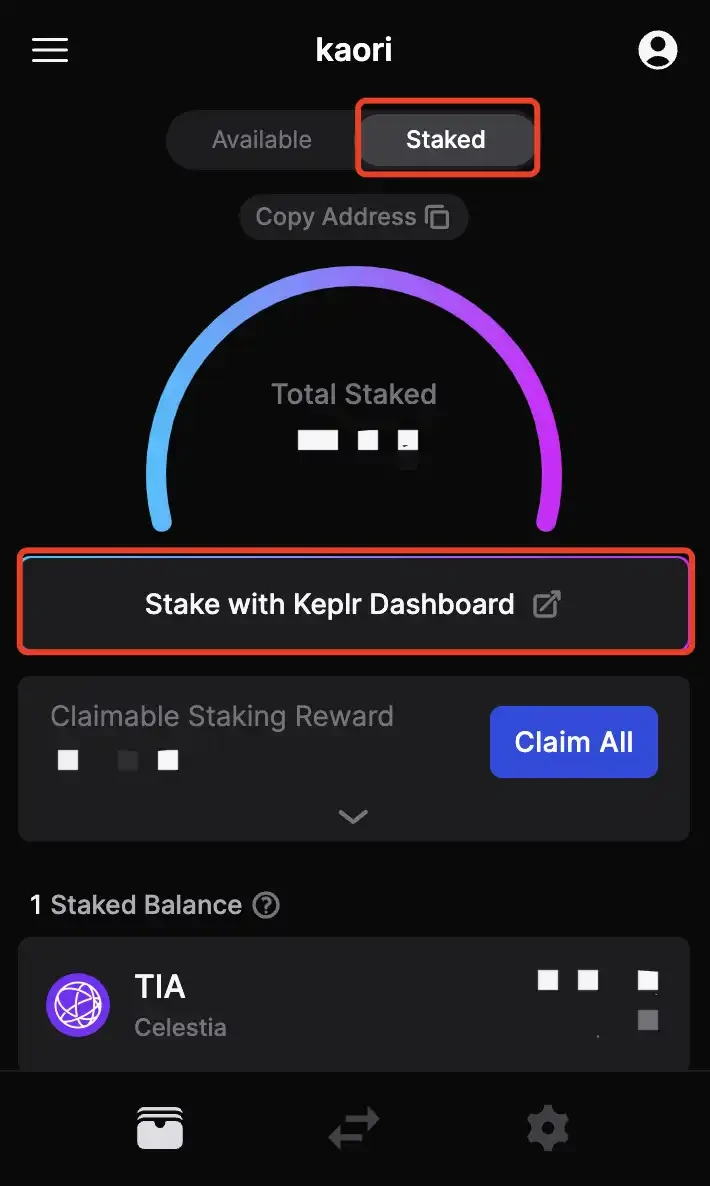
- If there is TIA in the wallet, the Celestia staking option will be visible. Click the "Stake" button.
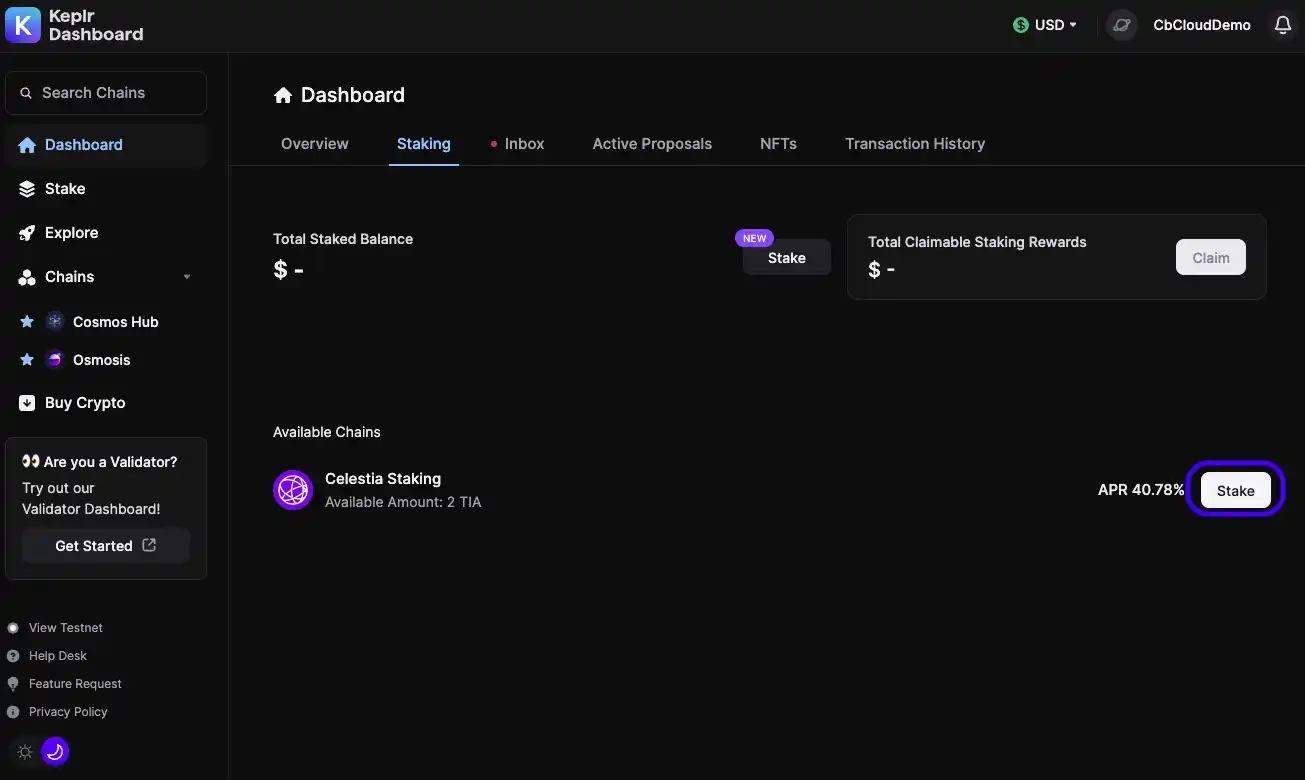
- Select the Celestia network and choose a validator.
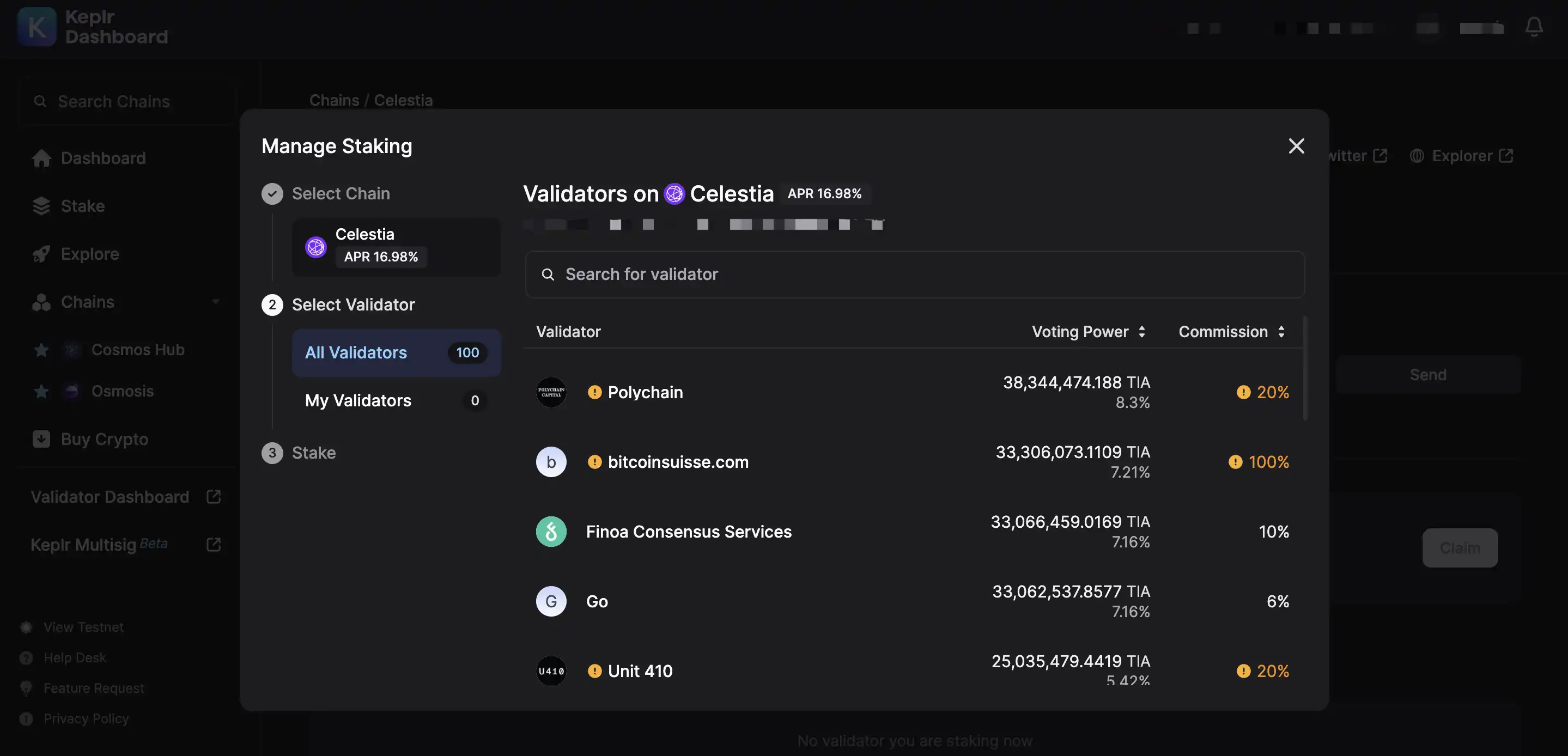
- Using Coinbase Cloud as an example, enter the amount of TIA tokens to stake and click "Stake."
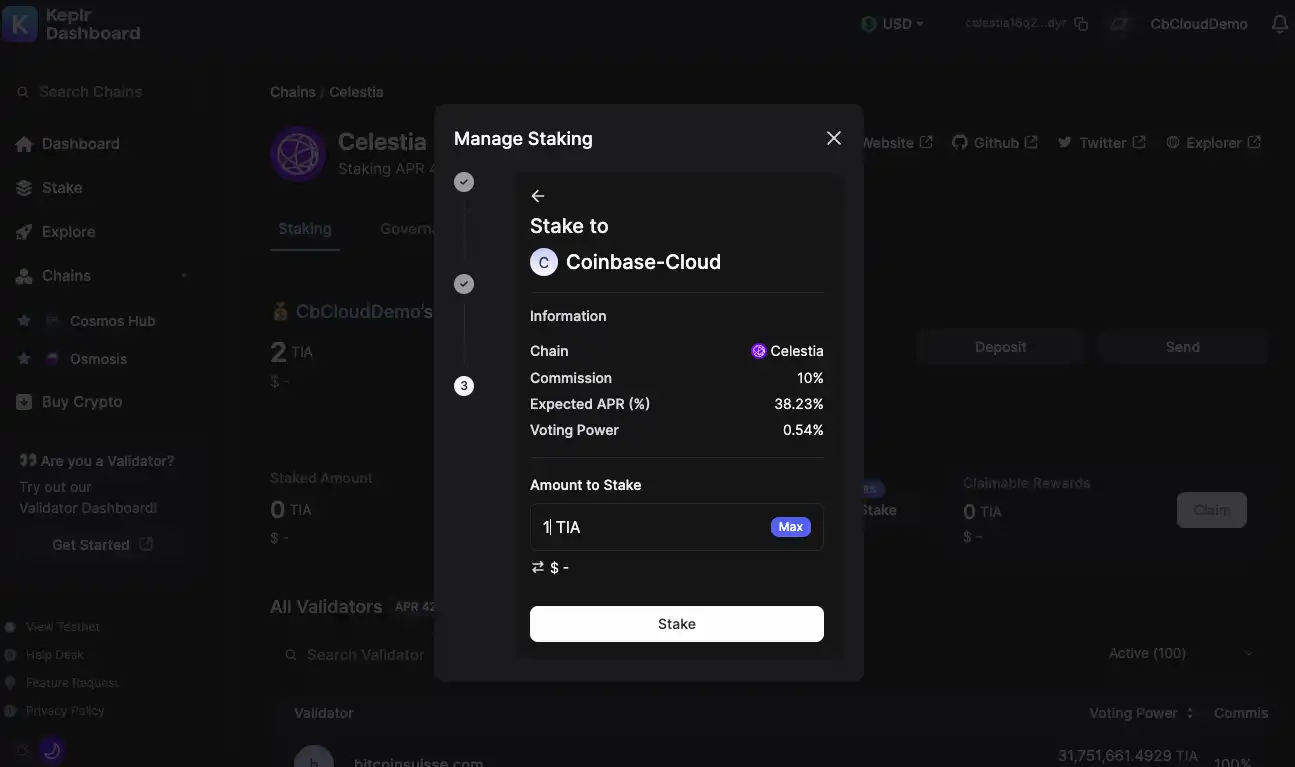
- If everything is normal, after confirming the transaction, rewards can be viewed in the Celestia staking interface, and options to claim rewards, unstake, redelegate, or stake additional tokens are available.
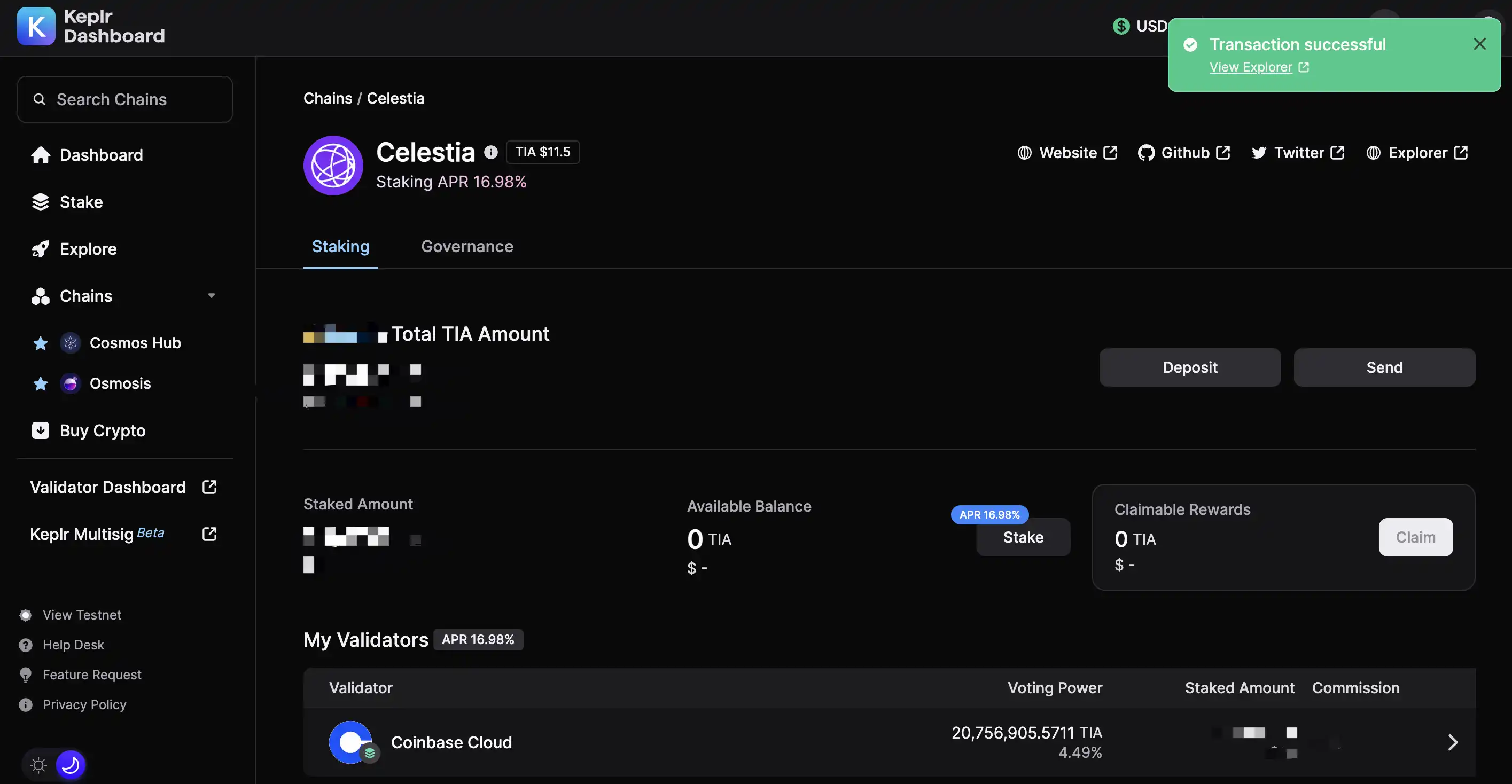
Staking TIA using Leap Wallet
The second official staking method is to use the Leap wallet.
- In the Leap plugin, click the top right corner to select the Celestia network and enter the Stake interface.
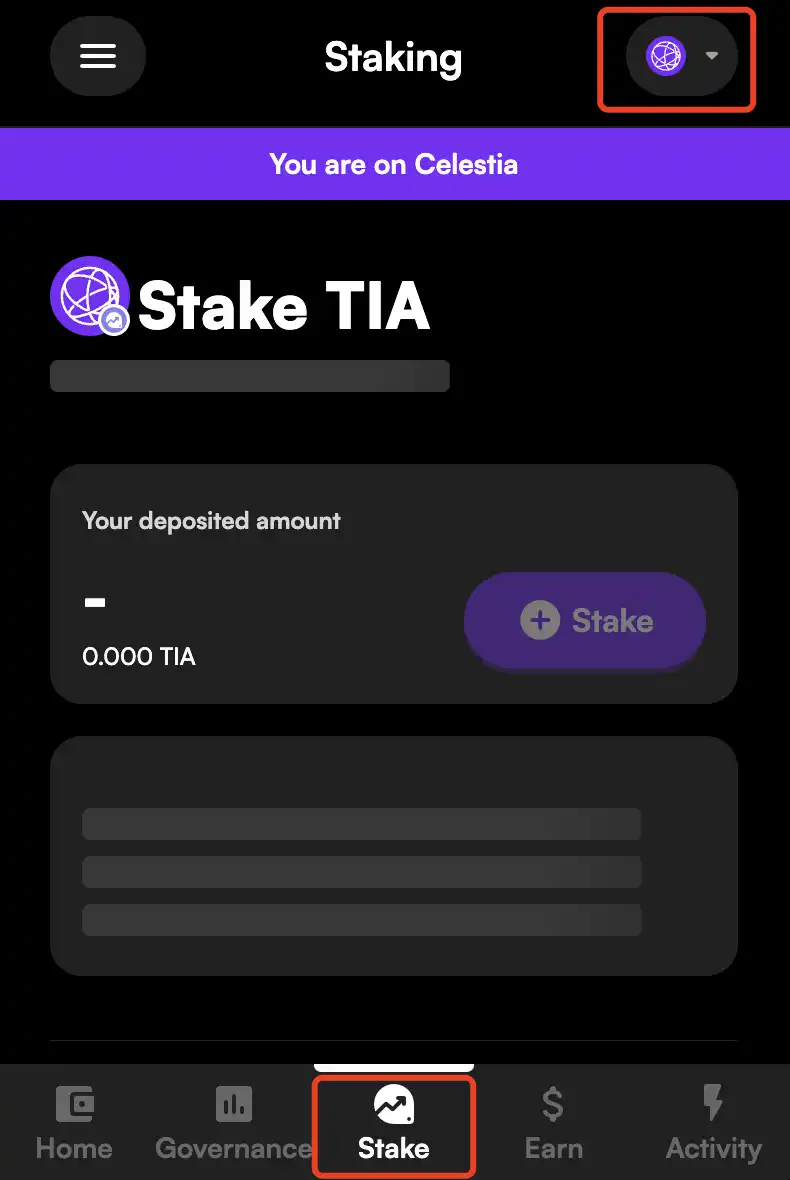
- Click on TIA Stake and select a validator. Using Coinbase Cloud as an example, search for the Coinbase Cloud validator and click.
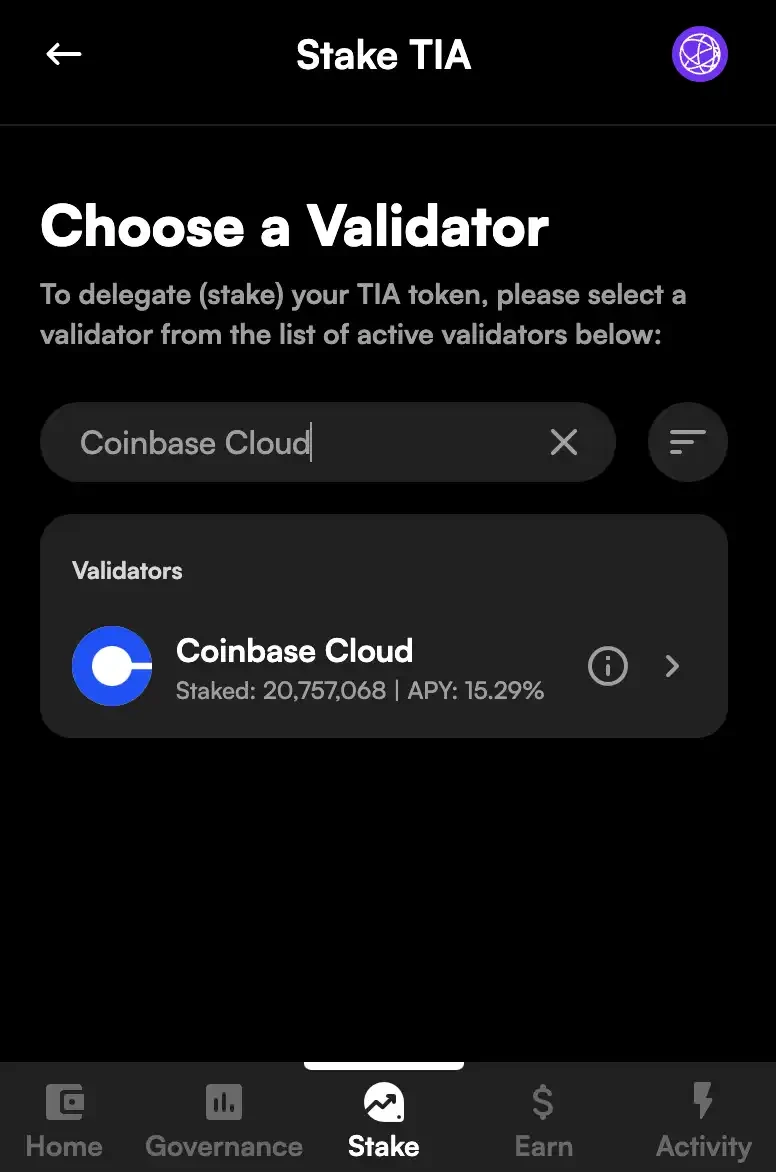
- Enter the amount of TIA to stake, then click "Review" to confirm the transaction.

What are the Potential Airdrop Opportunities?
Berachain
Berachain is a high-performance EVM-compatible blockchain built on the proof of liquidity consensus, combining the Cosmos native consensus mechanism Tendermint with its own proof of liquidity, and using Celestia as the DA layer to provide faster transaction speeds, lower transaction costs, and instant finality.
In April of this year, Berachain completed a $42 million financing round, led by Polychain Capital, with participation from Hack VC, dao5, Tribe Capital, Shima Capital, Robot Ventures, Goldentree Asset Management, and OKX Ventures.
Berachain has abandoned the traditional single native token economic model commonly used by public chains. The team believes that every decentralized economy should have three main components crucial to its operation:
- A medium for pricing and execution (Gas) to price work units and execute smart contracts.
- A medium for consensus and decision-making (Governance) to organize democratic functions and reach consensus and decisions.
- A medium for trading with a common stable face value (Stable).
Therefore, Berachain has adopted the corresponding Tri-Token economic model:
- $BERA: Berachain's Gas Token.
- $BGT: Berachain's governance token, which can vote on new whitelist assets. $BGT is non-transferable and can only be obtained by staking $BERA, ensuring long-term consistency for users.
- $HONEY: Berachain's native over-collateralized USD stablecoin. $HONEY is the money of the Berachain ecosystem, and is the way protocol income is paid to stakers. It will be over-collateralized by at least 150% to ensure it is pegged to the USD.
This economic model, referred to as "Tri-Token" by the development team, assigns unique roles to each token to encourage long-term use and maintain consistency in on-chain liquidity.
Manta Pacific
Manta Network is a modular blockchain based on ZK applications, and Manta Pacific is a modular L2 ecosystem for EVM-native ZK applications and dApps, and is also the largest ecosystem network on Celestia facilities. Its mainnet Alpha version was launched on September 12th this year.
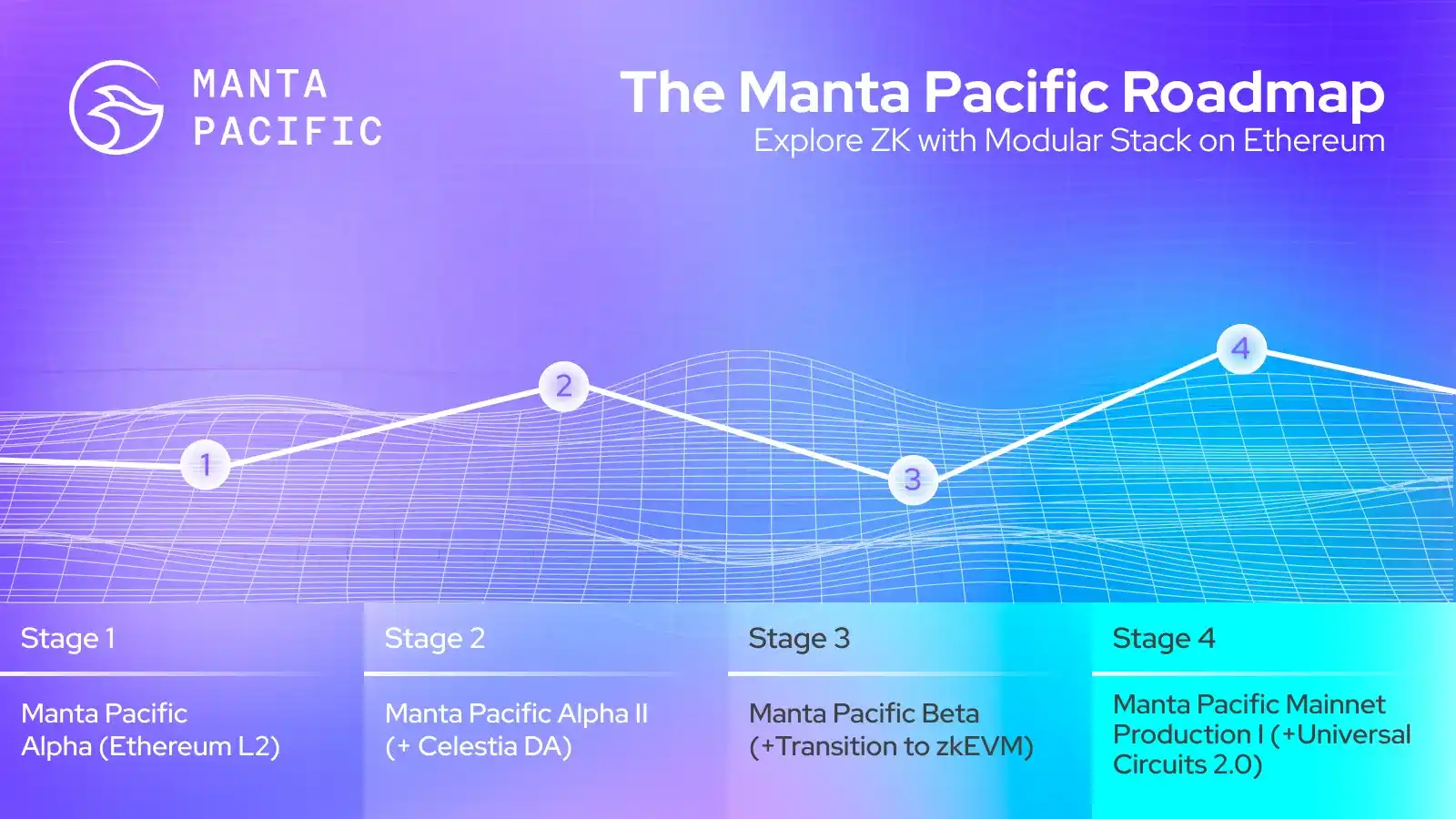
Currently, the roadmap released by Manta Network shows that before the mainnet launch, it will go through four stages: Manta Pacific Alpha version, Manta Pacific Alpha II, integration with Celestia DA; Manta Pacific Beta, transitioning to zkEVM; and finally, for the Manta Pacific mainnet, Manta Pacific will further upgrade the universal circuits to achieve lower gas costs.
Eclipse
Eclipse is a modular settlement layer that allows the creation of custom execution chains by selecting the desired consensus and DA layers. Eclipse supports EVM and SVM on the execution environment and plans to support more virtual machines in the future. It already supports Celestia on the DA layer and may support protocols such as Eigen DA and Avail in the future.
In 2022, Eclipse completed a $15 million Pre-Seed and Seed round of financing, with an earlier $6 million Pre-Seed round led by Polychain and a $9 million Seed round led by Tribe Capital and Tabiya.
In September of this year, Eclipse released its mainnet architecture, which will use Ethereum as the settlement layer, run the Solana Virtual Machine (SVM) as the execution environment, publish data to Celestia for scalable DA, and complete ZK fraud proofs through RISC Zero. In addition, the official statement indicates that the mainnet is expected to go live before the end of this year.
Polymer Labs
Polymer Labs is a modular network protocol built on IBC, aiming to achieve decentralized, secure, and permissionless cross-chain networks. In March 2022, Polymer announced the completion of a $3.6 million Seed round of financing, led by Distributed Global and North Island Ventures. In April of the same year, Polymer Labs partnered with Celestial to introduce IBC into Optimistic rollups.
In addition to the above-mentioned ecosystem projects closely related to Celestia, more ecosystem projects can be found at https://celestia.org/ecosystem/.
免责声明:本文章仅代表作者个人观点,不代表本平台的立场和观点。本文章仅供信息分享,不构成对任何人的任何投资建议。用户与作者之间的任何争议,与本平台无关。如网页中刊载的文章或图片涉及侵权,请提供相关的权利证明和身份证明发送邮件到support@aicoin.com,本平台相关工作人员将会进行核查。




